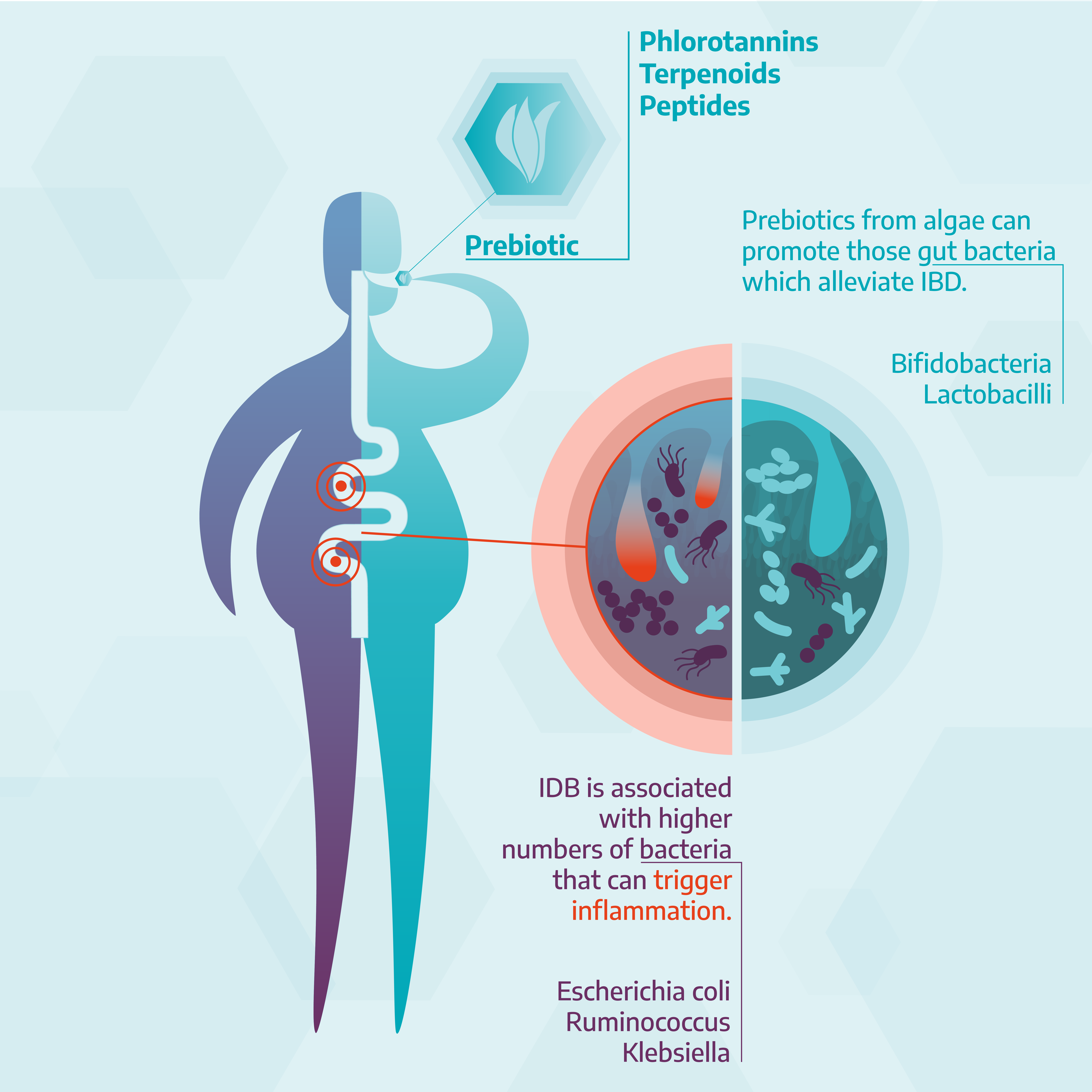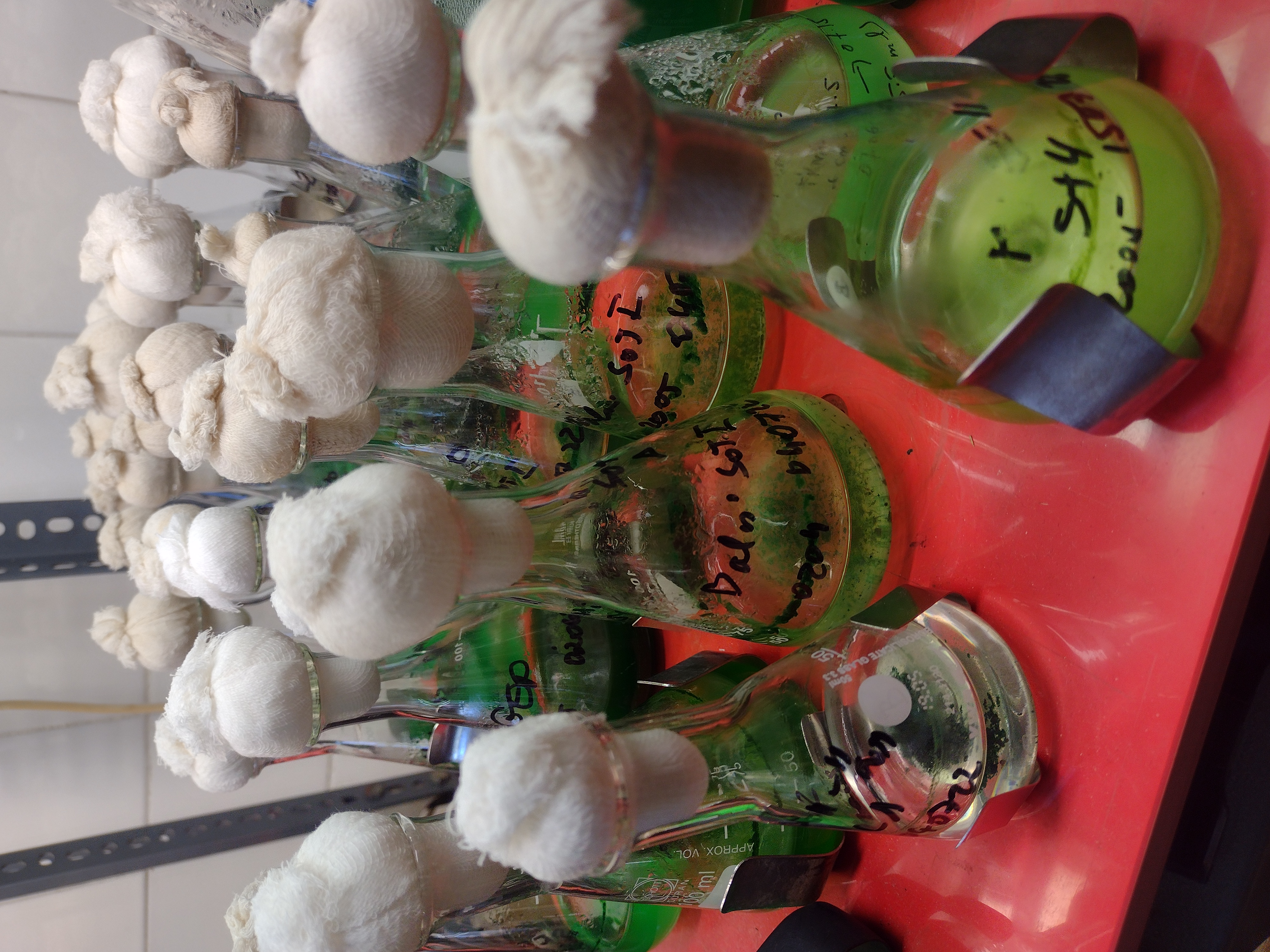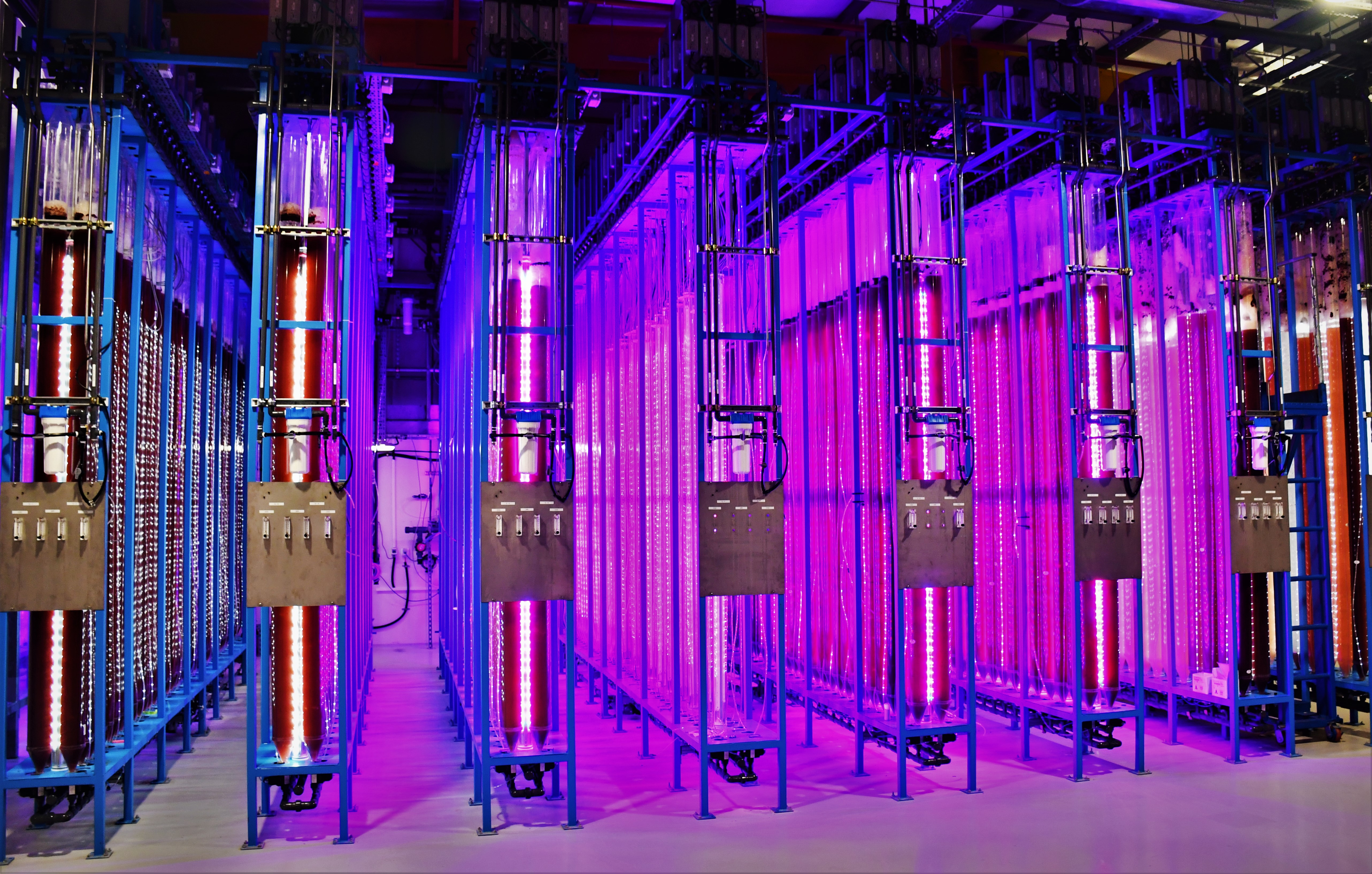Jan 18, 2024 | News
1. What is the concept of Algae4IBD?
The Algae4IBD project (https://algae4ibd.eu/) brings together 21 researcher institutes and companies from 11 countries to unify their expertise in different fields to help patients with chronic inflammatory bowel disease (IBD). Chronic inflammation of the digestive tract is a very complex disease for which there is no universally applicable treatment. Since algae are known to produce specific bioactive molecules, they are a promising source when looking for new therapeutic agents.
Cyanobacteria, microalgae and macroalgae may contain molecules that can relieve pain and inflammation or benefit the microbiome. However, most algae are an unexplored repository of these active ingredients and their potential in health care is currently undiscovered. Therefore, in the EU-funded research project Algae4IBD (European Union's Horizon 2020 Research and Innovation program under grant agreement N° 101000501), we are investigating known and less known, newly isolated algae over four years, searching for compounds with pain relief, anti-inflammatory, prebiotic or antibiotic activity.

The figure shows how algae compounds can help mitigate IBD symptoms (Photo credit: Algae4IBD and ESCI)
2. Could you tell us a bit about how plant biology can be related to this project and to the inflammatory bowel disease (IBD)? What kind of algae do you work with (micro and/or macro) and why did you use them in the treatment of the diseases?
For many years, our group has been working on microalgae, which are known to be good models for plant photosynthesis, but also suitable for studying other metabolic processes and bacterial cell proliferation. These tiny, oxygen-producing, photosynthetic organisms are found almost everywhere on Earth. They are renowned for their ability to adapt excellently to changing environments or extreme conditions. This may be the reason why they are rich in valuable bioactive compounds, as they are able to synthesize specific secondary metabolites. Nowadays, more and more of these molecules are being identified and their roles and usabilities are being intensively investigated, just like we are doing. Increasing attention is being paid to these natural bioactive substances because there is a growing demand for both as animal feed and even more as human food. Being important nutritional supplements that have a positive effect on health and strengthen the immune system can prevent the development of diseases. There is also a great need for new active substances that can provide solutions for chronic diseases. Our group has a collection of microalgae cultures originating from natural waters in our country.
We have always been interested in what active substances are hidden in these organisms, including plant biostimulants, or substances that can be used as immunostimulants in animal feed or as anti-inflammatory agents in human medicine. Previously, within the framework of a GINOP project (Ginop-2.3.2-15-2016-00058), we have been looking for algae for fish farms that can be used as a supplement to increase the biological resistance of animals. In the context of this project, we joined the research team of Algae4IBD.

Researchers participating in the research project in one of the algae culturing rooms (from left to right: Sarolta Nagyapati, Bettina Ughy PhD, Dima Deeb)
3. I saw on the Algae4IBD page that you want to achieve two main goals during the project. Could you tell us about these objectives? Are both equally feasible or will one of them be more likely to be?
In the project we are looking for active substances that have anti-inflammatory and/or analgesic effects, as well as those that can play roles in disease prevention. We also aim to develop nutritional supplements, functional food and a base for a medicine that might help to prevent/treat the development of some diseases, for example IBD. We consider both equally essential and our results so far have given us hope that we will be successful in both areas. However, it is important to know that it takes a long time to bring a medicine to the market, as both the active substance and the formulation of the medicine have to comply with regulated procedures and approvals, so bringing a medicine to the market is usually a time consuming process. Dietary supplements also have to meet strict regulations, but because they do not have to be purified in some cases, they can be marketed more quickly. The members of the consortium are working to ensure that the results of each line of research benefit people and are widely available as soon as possible. To achieve our goals, In the Algae4IBD project we have formed a team of scientists working in different fields to cover the entire development process from algae cultivation through testing to product formulation.
4. Is there any difference, what should be taken care of when growing algae from the point of view of what purpose they will be ultimately intended for? What are the challenges in this area?
There are certain strict standards for nutritional supplements and even more so for the active ingredients of medicines, as I mentioned, have to meet. All these must be considered when culturing and processing the algae during the project.
One of the most important things is to be able to produce sufficient algae biomass, and it is also important to increase the production of active substances. In our group we are therefore focusing on the factors that influence the growth of microalgae and then how the production of active substances can be increased.


Microalgal cultures gown at laboratory-scale
Significant results have been obtained in the study of cyanobacterial proliferation, which has been used to achieve efficient biomass production. But what really highlights the importance of our studies is that our findings are universally applicable to bacterial reproduction, so our findings have implications for understanding bacterial consortia and therefore for microbiome studies, and even for answers to emerging antibiotic resistance. We have shown that the growth of bacterial populations inevitably leads to a so-called stationary phase, and this is not due to nutrient deficiency, accumulated toxins or cell death, but to a specific bacterial differentiation. In this phase, the bacteria's metabolism changes and they can produce special metabolites intensively. A population of bacterial cells can be thought of as complex communities, acting as a virtual tissue. The generation time of a bacterial population does not seem to be a constant value but also depends on the concentration of the initial cultures. We have identified a so-called minimum stationary cell concentration (MSCC) point, where the cell concentration of a stationary population remains still despite continuous dilution, i.e. the population does not start to divide after a given dilution. This point appears to be definable for all single-cell organisms. So, while examining the microalgal population growth, in order to influence biomass production, we made some fundamental discoveries that could influence research on any bacterial or unicellular organism.
We are also investigating ways to enhance the production of the substances and have succeeded, for example, in increasing the amount of paramylon (an important sugar polymer) severalfold in Euglena cells and in changing the carotenoid composition. Paramylon is a starch-like carbohydrate composed of beta-glucan, which is thought to have immunostimulant and anti-inflammatory effects.
5. What is the main task of your group in the project?
Our main tasks, as I mentioned, include optimizing algae production, increasing the active ingredient content(s). These are the tasks that we try to fulfill according to our best. This is a multi-layered task, firstly to identify the right algae species, then to optimize the culture conditions and finally to improve the active substance content by changing the culturing conditions.


Large scale of algae production: the first device belongs to Necton and the second one belongs to Yemoja Ltd. (Photo credit: Necton and Yemoja Ltd.)
6. How do you see the cooperation continuing after the end of the project?
A great community of researchers has developed, which is very motivating. The project is still ongoing, but I feel that most of the teams will keep in touch after the end of this project and we will look for opportunities to collaborate in similar or other areas. This project has shown that we can work together effectively; we built a team that is looking for solutions to new challenges, and we are combining our knowledge from different disciplines to try to answer as many scientific questions as possible and to make them as useful as possible for society.
For more information: https://algae4ibd.eu/
Source of cover photo: Algae4IBD